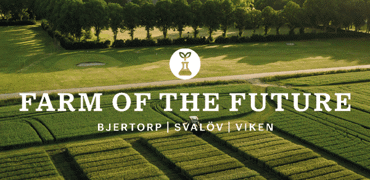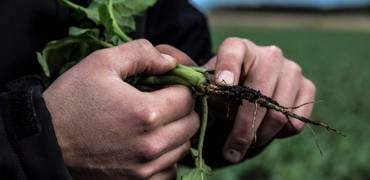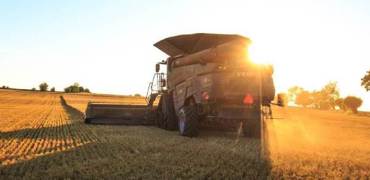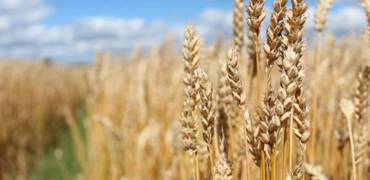Plant breeding speeds up the transition to more sustainable farming

Desireé Börjesdotter has been Lantmännen’s Director of Plant Breeding since October 2023. She works at Farm of the Future Svalöv where Lantmännen’s advanced plant breeding facility is located. In this blog post, she describes how plant breeding acts as a lever for Lantmännen’s vision of Farming of the Future.
Plant breeding is a future solution with great potential. The challenges we face are well defined; we must increase the productivity and profitability of Swedish farming, while decreasing our climate impact according to Lantmännen’s vision Farming of the Future. The timeline for the transition of farming is short – there are only 26 harvests left until 2050, when our goal is that Swedish farming will have reached climate neutrality. This is a short time in our sector and it’s not easy to change cultivation where the planning horizon is long – but with plant breeding we can. With our new, advanced set-up and equipment in Svalöv, we can speed up the plant breeding process and create new varieties with better adaption and yield than before.

Farm of the Future Svalöv has nine growth chambers
In June 2022, Lantmännen launched a new plant breeding facility in Svalöv. Our investment in integrating genomic selection and speed breeding in traditional plant breeding opens exciting opportunities. And when combined, we get the best of both worlds. The investment offers new opportunities that speed up the development of the crossing parents and the possibility of several breeding generations per year. During the winter of 2023-2024, we increased the activities in our cultivation chambers where we use the new methodology for spring wheat, oats, barley, winter wheat and triticale. Since I started my new job as Director of Lantmännen’s plant breeding in the fall, my mission is to shift gears and gain benefits from the investment. Our task is to create competitive varieties. It is necessary that the varieties work in practice both for the farmer and in the food chain. To do this they must be tested under field conditions over years. Therefore, the selections in field trials over several seasons are still a very important part of agricultural plant breeding. Our three Farms of the Future provide good conditions for testing. In addition to the Farms of the Future, Lantmännen’s trial network encompasses about 20 sites in Sweden, as well as sites in other countries.
With our new, advanced set-up and equipment in Svalöv, we can speed up the plant breeding process and create new varieties with better adaption and yield than before.
Another new development is the sampling robot that will be delivered to us shortly. It is a big investment that will improve our work. The robot takes leaf clippings of small plants from the crossings we have made. With the robot we do not need to manually clip the leaves of the thousands and thousands of plants that grow in our cultivation chambers. The robot will make this much easier. The leaf clippings then go on to be sequenced so we can obtain information about the DNA set-up of each offspring. We can then sort out the plants that have not been given the right combinations, for example different disease resistance. After that, we cross the plants that are the best in each generation and continue the cycle of crossing and selection, before we test the material in the field. By being able to look at the genetic information and gain knowledge of the characteristics before we have even seen the variety in the field, we improve the basic material, the crossing parents, and possibly take bigger steps forward than before.

At Farm of the Future, Svalöv, there are 500 populations in selection plots, between 45,000 to 50,000 ear rows of grain, 8,000 small parcels of 1m2 and around 1,200 lines in yield trials
One example of a new variety we created in Svalöv is the winter wheat KASK, a milling variety that was introduced to the market in large-scale last year. KASK has great growing characteristics – it is robust, winter hardy, yields excellent under different growing conditions, is well tested, healthy and has good straw strength. It can stand mature without the germination processes starting in the kernels even in rainy fall weather. Quite simply, the winter wheat KASK can meet the expectations of farmers today. KASK also responds to the expectations from society at large regarding a more thriving and productive farming. For example, it has both a high protein content and a high starch content, which is not very common. This provides flexibility and makes the winter wheat variety suitable for more areas of use within the food industry.
I see many new opportunities in the future off plant breeding, where an exciting area of development is gaining access to infrastructure that allows us to include the roots of the plants in our work. We rarely look at the roots because it is difficult, but with new techniques we should be able to identify potentials for the future, also within this area. What should the roots look like? What is the most effective root system? How do we produce the right material to test? These are some of the questions we will be looking at in the future, to secure the harvests and reduce climate and environmental impact from farming.























